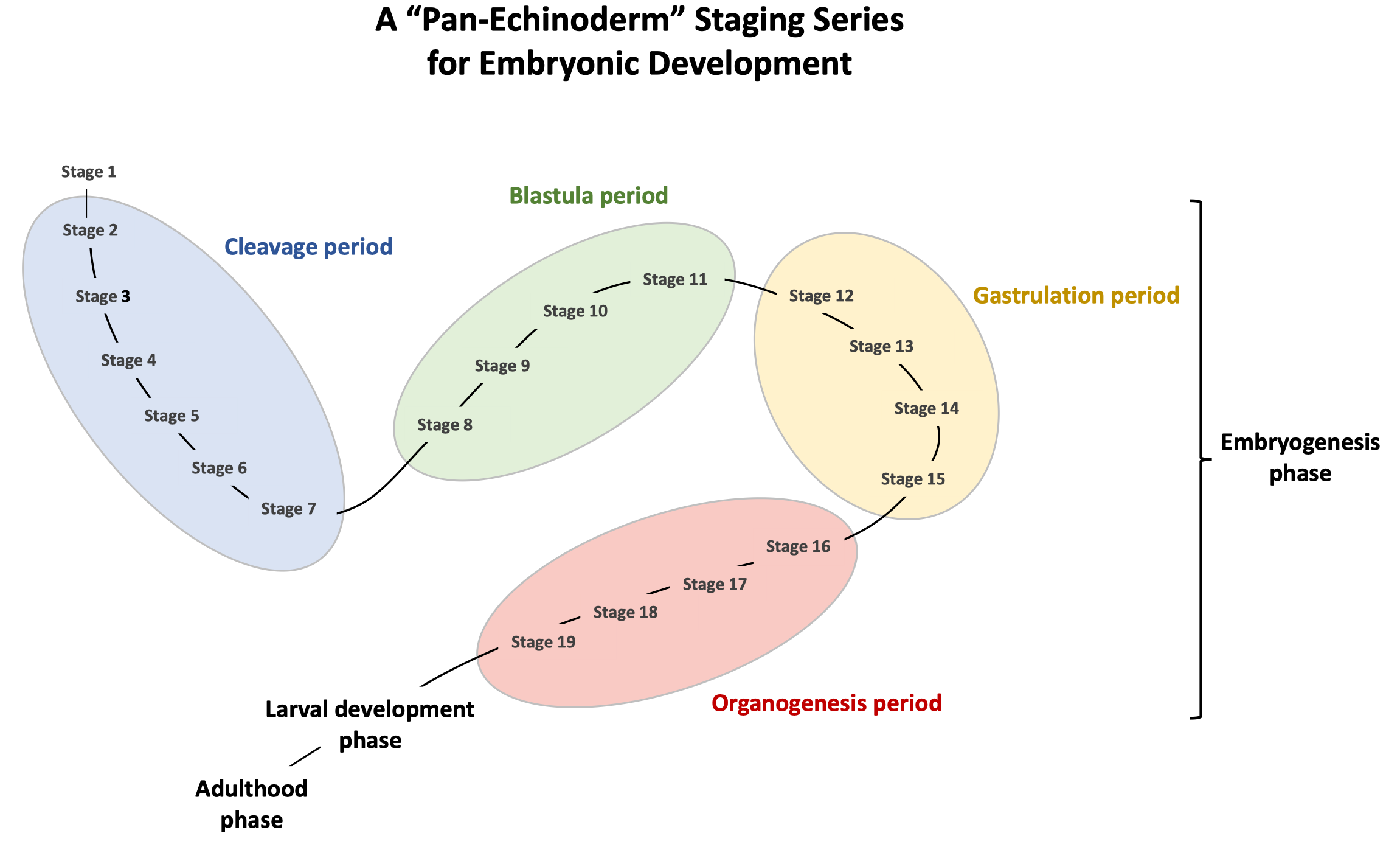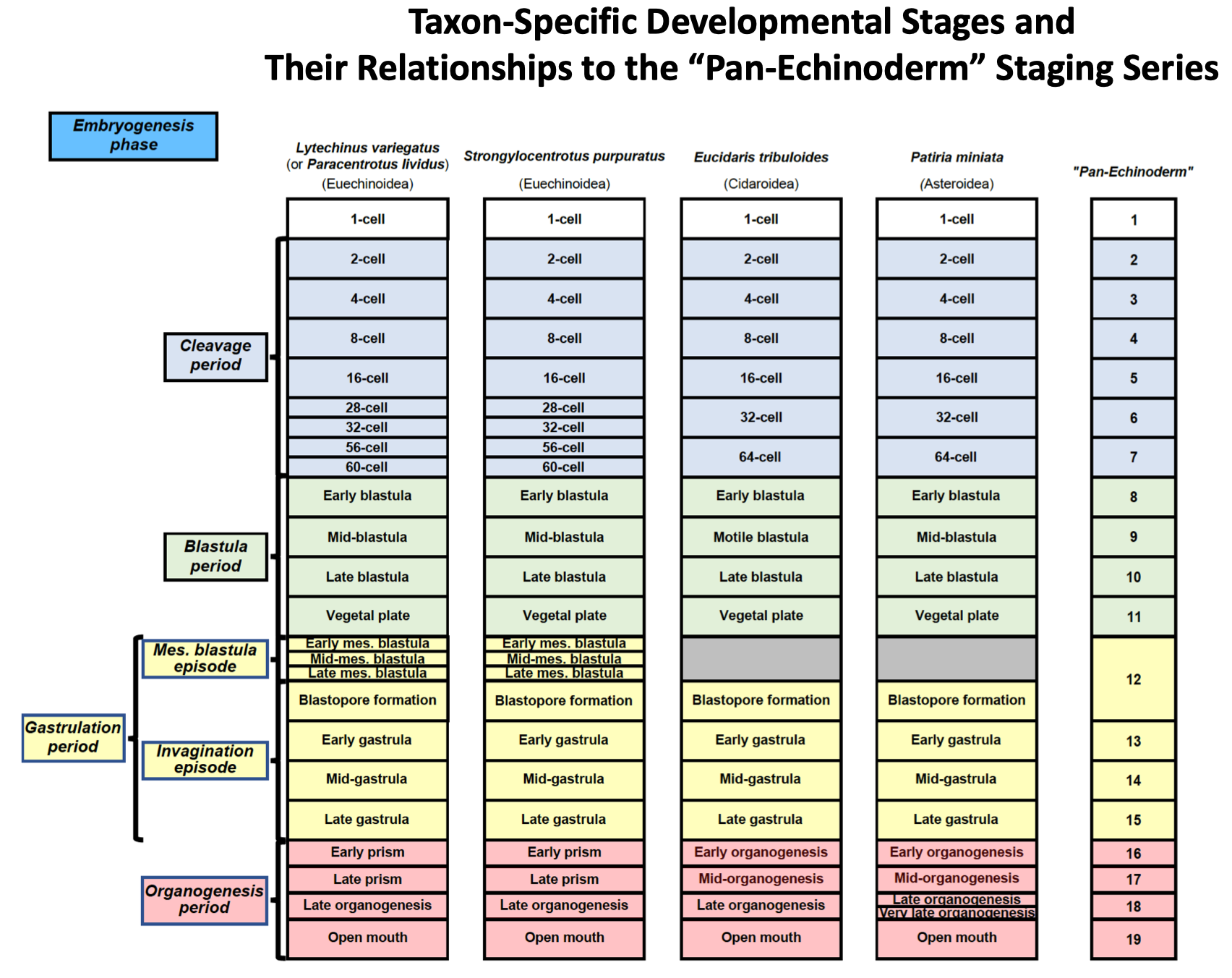|
Echinoderm Anatomy and Development Ontology
The Echinoderm Anatomy and Development Ontology (ECAO) describes echinoderm anatomy and embryological development using a controlled vocabulary of anatomy terms and developmental stages that are organized in a hierarchy with a graphical structure. Echinobase curators use ECAO terms to describe the spatiotemporal expression patterns of endogenous gene products, the transcriptional activity of cis-regulatory modules, the effects of morpholinos, and other types of biological information. The ECAO is constantly being updated in response to the latest published echinoderm research.
The ECAO contains 1000's of terms and relationships. Each anatomical system (e.g. nervous system, skeletal system), tissue and structure (e.g. ciliary band, mesoderm, blastopore) and many cell types (e.g., pigment cell, serotonergic neuron, skeletogenic mesenchyme cell) are separate
terms; each term
is fully defined and related to other terms by is_a, part_of, develops_from and develops_into relationships.
Users should be aware that the ECAO includes the anatomical structures and developmental stages of several different echinoderm species.
Some of the structures and developmental stages included in the ontology are species specific.
Search
Download the ECAOThe ECAO is available to download from Echinobase in either OWL or OBO formats. The ECAO is also available from the Open Biomedical Ontologies (OBO Foundry) |


|
Publications about the ECAO
Other anatomical ontologies
- UBERON multispecies, including amphibians
- Xenopus
- Zebrafish
- Mouse
- Human - Foundational Model Explorer
